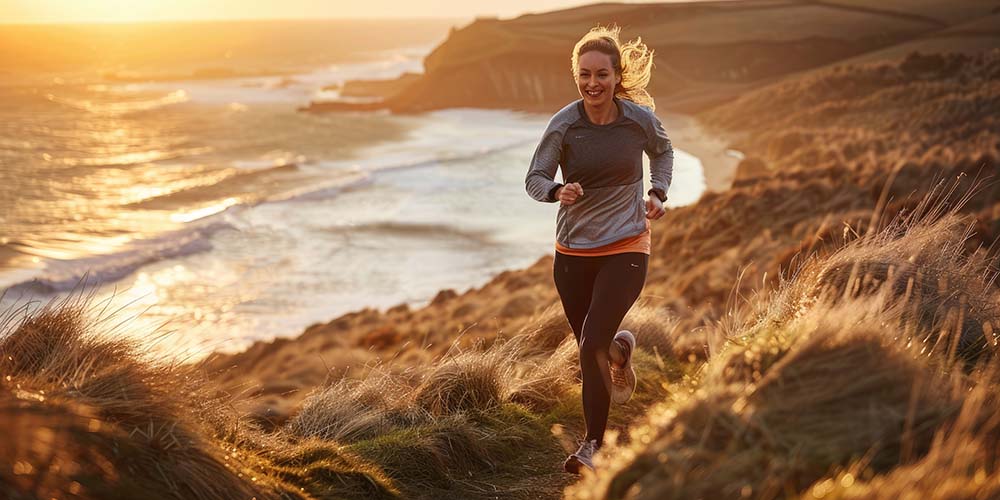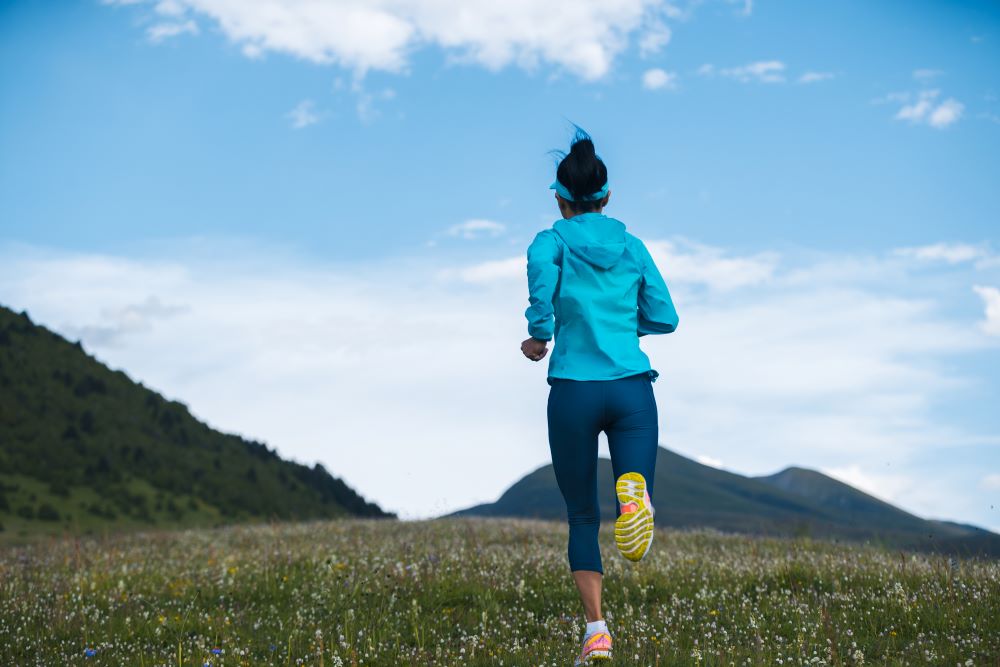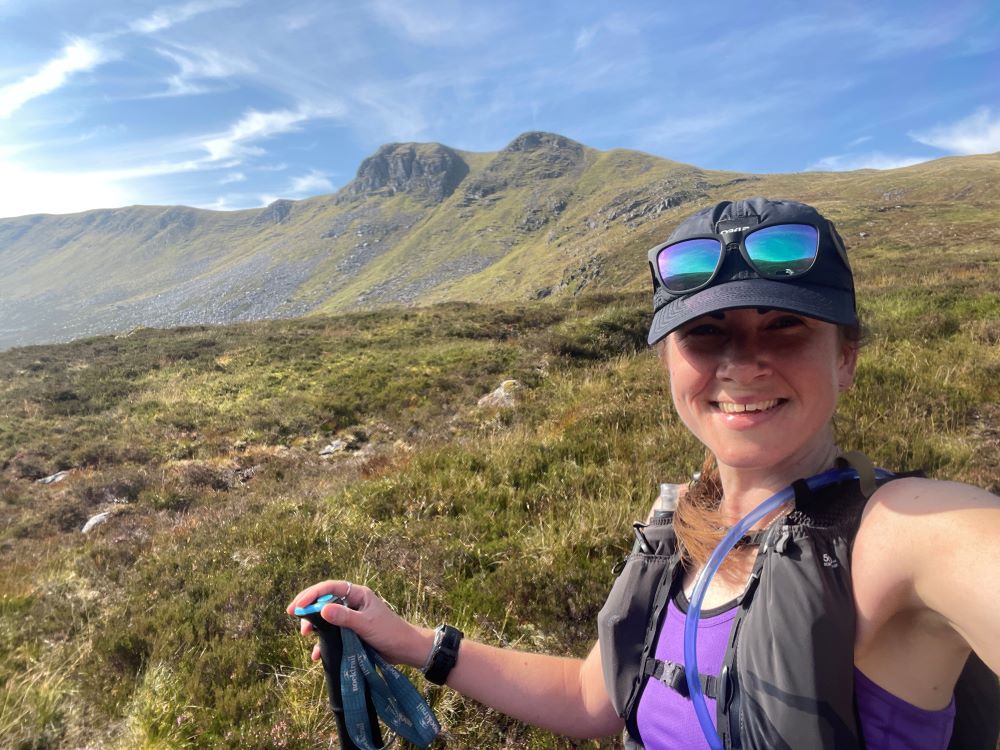Training advice for 25km to 100-mile trail races
Prepare to take on the epic 13 Valley’s Ultra or any long distance trail running race with our tips on mileage, terrain, hydration, nutrition, strength, kit, navigation, and final preparation.
Running a long-distance trail race is a challenging and rewarding experience. There are hundreds of trail races to choose from across the UK with a range of distances from 3-miles to over 250. From gentle rolling hills and flat coastal paths to single tree-lined tracks and exposed mountain ridges, trail running events can cover such diverse terrain – which is why they’re so great!
You can find a list here of Long Distance Paths around the UK which often feature in Trail Runs.

13 Valleys Ultra
We’re delighted to be the official mapping partner for the new 13 Valleys Ultra this September. The 13 Valleys is an epic ultramarathon event, in partnership with the Lake District National Park.
The 13 Valleys Ultra came about as an idea to link all the valleys of the Lake District together and to create a year-round trail for walkers and runners. This trail will take you to areas of the National Park that people wouldn’t normally see and celebrate the UNESCO Heritage Site status of which the 13 unique valleys is a key part. Once a year the 13 Valleys Ultra will celebrate this beautiful trail, with distances for all, from 20km to 180km.

Whether you’re transitioning from road running to trail running, or you’re a trail blazer looking to increase your distance and take on your first ultramarathon, preparing for an event like the 13 Valleys requires both planning and training. In this article, we’ll explore some of the key aspects of long-distance trail running training, from mileage and terrain to hydration and nutrition, strength and conditioning, kit, navigation, and final preparation.
Mileage
If you’re new to trail running or moving from shorter distances to longer distances, it’s important to take it slow and gradually build up your mileage. Start by running on gentle terrain (think woodland paths and undulating hills) and gradually increase the distance and intensity of your runs. This will help you avoid injury and build the necessary endurance and strength to tackle longer distances.
One of the most important aspects of training for a long-distance trail race is building your mileage. You should increase your mileage gradually, around 10% per week, to avoid overuse injuries such as tendonitis. There are plenty of training plans available online and a whole host of advice and support from other runners in forums and related Facebook groups. You’ll often find that runners have different views on how much mileage is required per week. This depends a lot on the distance you’re training for and what other activities you do. There’s no denying that going for a run is the best way you can practice for a running event, but it’s important not to get too held up on big mileage. A successful ultramarathon runner recently suggested that you can still perform well without having to take too much time out of your day for a long run.

Many ultrarunners swear by back-to-back runs to get used to running on tired legs. Splitting an 8-hour run into two 4-hour runs (in close proximity) can reduce your risk of injury and allow you to recover quicker. However, this may not give you a true picture of what it will be like to be on your feet the entire day or overnight, so it’s a good idea to try and get some experience of this to help prepare both the body and mind!
Terrain and hills
Long-distance trail races often involve challenging terrain such as steep hills, rocky tracks, and technical trails and the 13 Valleys Ultra is no exception. To prepare for these challenges, it’s important to incorporate hills into your training to help you build the necessary strength and endurance. Even if you’re a seasoned marathon runner on road, the same distance across hills will be a shock to the system. It can be hard to find hills in an urban environment and this is where hill reps come in handy. Find your nearest hill, slope or even city steps and run up and down – for a considerable duration – to prepare your legs for hills. It’s not always fun and you’ll certainly feel the burn but it’s a great workout!

Similarly, if you’re used to smooth coastal paths and you’re wanting to take on something like the 13 Valleys, you should try to practice running on rocky paths with steep gradients. Not everyone lives near the mountains but heading out into the countryside will give you an opportunity to run on uneven ground.
If taking on something like the 13 Valleys Ultra, make the effort to get out into the mountains a few times before your race to recce the route. You should have the experience and knowhow to be self-sufficient in the mountains, even if the event is fully supported. Mountain Rescue offer some great advice on how to stay safe in the hills.
Hydration and nutrition
There are three main components to running an ultramarathon. Physical and mental strength and endurance all play a big part, but if you haven’t got your hydration and nutrition right, even the fittest of athletes can fail.
Proper hydration and nutrition are crucial for long-distance trail running and shorter distances over tough terrain as you’ll be out much longer than when running on flat. During your training runs, carry a hydration system that allows you to drink regularly and replenish your fluids. As a rule of thumb, you want to be taking on between 500-1000ml of fluids every hour, depending on the weather and how much you sweat. DIY sweat tests can be found online if you’re unsure. Electrolytes should be used over longer distances to prevent dehydration and many runners swear by salt tablets to prevent cramp. Practice taking on energy gels or other high-energy snacks to fuel your body during your longer training runs.

Every runner is different and what works for some stomachs may not work for others. Some runners prefer proper food like sandwiches over energy gels whilst others crave all sort of weird and wonderful things like pork pies and new potatoes. There’s even preference between one brand of gels and electrolytes over another.
It’s important to practice eating and drinking if you’re transitioning to longer distances because unlike a shorter, faster race, you will need to fuel sufficiently. Most events have aid stations stocked with all sorts of delights although some people prefer to stick with what they know and have practiced with – it’s all down to personal preference but the best piece of advice is to eat and drink little and often.

Strength and conditioning
Many long-distance runners get by without any form of strength and conditioning, but it can be just as important than the running itself. Building strength will undoubtedly make you a better runner and you’ll be able to get up those hills more easily, but it also helps prevent injury.
Stretching and adequate recover time should not be overlooked and incorporating this alongside strength and conditioning will build the necessary strength and endurance to tackle challenging terrain. Your core, upper body and legs all play an important role in propelling you forward and exercises could include single leg lunges, deadlifts, push ups and glute bridges. A little research online can help you incorporate one or two strength and conditioning sessions into your training each week.

Kit for long distance trail running
Choosing the right kit for your long-distance trail race is crucial. You don’t need to spend thousands of pounds on the best gear, but it’s important you’re comfortable and safe. Make sure to invest in a good pair of trail running shoes that provide adequate support and traction. On an event like the 13 Valleys, you’ll want shoes with 4mm lugs or more, depending on how wet it has been.
In addition, dress appropriately for the weather and make sure you have a big enough hydration pack to hold everything listed in the event’s mandatory kit list (for 13 Valley distances over 20km) – it’s there for both your comfort and safety. Refrain from trying anything new on race day, and this applies to food too! Test your shoes and kit throughout your training, a small irritation will amplify over longer distances. During the 13 Valleys 100km and 180km events, runners have the option to have a drop bag placed approximately halfway, so have a think about what you may need mid-race.

Navigation tips for trail races
Before you set off, load the route’s GPX file onto your GPS watch and mobile phone and download the route for offline use to help you navigate with ease. You can do this directly from the OS Maps app – participants of the 13 Valleys event can get 20% off an annual subscription.
Long-distance trail races often take place in remote areas where GPS and mobile phone signals may be unreliable. To prepare for this, learn how to navigate using a map and compass. Practice navigating on local trails to build your confidence and skills and if you can, recce the route. This will provide a valuable insight into what to expect come race day – not just regarding the route, but terrain too. The 13 Valleys shorter distances (20km and 60km) are fully waymarked but the 100km and 180km require self-navigation so the ability to use a map and compass is key. You can now purchase the official 13 Valleys Ultra map.
Take a read of our comprehensive free map reading guides.

Final preparation for long distance trail running
In the weeks leading up to your race, focus on tapering your training and getting plenty of rest. Make sure to stretch regularly to keep your muscles limber and prevent injury. A few gentle runs will do no harm.
In addition, take the time to familiarise yourself with the route and logistics, such as aid stations and cut off times. Organise any transport, parking and accommodation well in advance, you don’t want additional stresses on race day. Most importantly, enjoy it! By this point you would have done the training, have your kit and everything ready, so all that’s left is to lap up the race atmosphere, take in the incredible scenery, immerse yourself in nature and have the run of your life!
Preparing for a long-distance trail race like the 13 Valleys Ultra requires careful planning and preparation. Focus on building your mileage gradually, incorporating hill training and off-road running into your routine, and practice fuelling your body with proper nutrition and hydration. Invest in good quality kit and brush up on your navigation skills to prepare for your time in the mountains. With proper training and preparation, you’ll be ready to tackle the 13 Valleys Ultra and enjoy the incredible beauty of the four challenging routes on offer.





